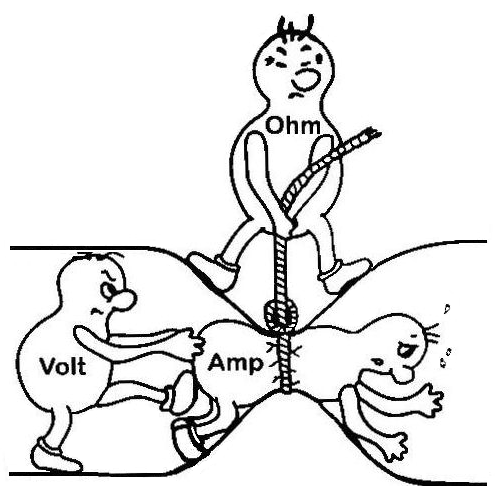Complete Ohms Law Explanation Guide With Example
When an electrical student start his study or he select the electrical technology that he/she will make his future in electrical technology. In first book he/she face a law which is called ohm’s law which very important law. Because using this law a electrical student can do calculation of many electrical circuit example, but many people learn the ohm’s law just for solving example which given in book or paper but can not use it in real work.
Every one know that the ohm law is important for electrical student and every one know that ohm s law is too simple to learn but many student can not use it real work, my mean’s that they did not understand completely the ohm law. Today in this article we will disuse the ohm ‘s law and it’s formulas with complete example which will make you completely understood.

Ohm’s Law Explanation
In the electric circuit, the current (I) is directly proportional to the appalled voltage and inversely proportional to the total circuit resistances. This law is called ohm’s law which was make/explained by Bavarian mathematician and physicist Dr. Georg Ohm.
In simple words if the circuit current will high then circuit voltage also high or we can said that current and voltage will have relation ship between one another and if resistance will high then current and voltage will be getting low.
Formulas of Ohm’s Law
Current = potential difference/resistances OR I = V/R OR Effect = Cause/Opposition
The above formulas - is called ohm law formulas. We can apply these formulas on complete circuit or a part of circuit. If we want to apply these formulas to complete circuit then procedure is to divide the complete circuit current , complete circuit voltage to complete circuit resistances.
OR
If you want to apply formulas on a part of circuit to find out the current then procedure is to divide part of voltage to the part of resistance.
For calculations we can use ohm’s law in three shap es which are
I=V/R (Current = voltage divided by resistance)
V=IR (Voltage = current multiplied by resistance)
R=V/I (Resistance = voltage divided by current)
Ohms law Example Explanation
1. WE have circuit, in which resistance is 5 ohm and applied voltage is 10 volts then how can we find out the current (I).
It’s simple using first formula I=V/R
In the circuit V is 10 and R is 5, then 10/5 = 2
So the total current of this circuit is 2A (2 Ampere).
2. In above circuit we know that current is 2 and resistance is 5 and want to find of circuit voltage then.
V= IR which is V=IxR Or V= 2 x 5= 10V
Then the voltage of the circuit is 10 volts.
3. And if we have volts and current values and wants to find out the total resistance then
Volts is 10 and current is 2 Which means that
R=V/I Or R=10/2 = 5-
So the total resistance of circuit is 5 ohms.
You notes that each example find out the correct value it’s means the calculations is right. Note that this law can only apply on DC (Direct Current).
Message
I hope now you completely understood the ohm’s law and know you can use this law in practically works and circuit. If you got some thing helpful then kindly share this with your friends. Also do comments for about ohm law examples in below comments section.

Komentar
Posting Komentar